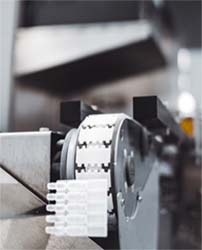How does ApiJect ensure that the temperature changes which occur during BFS manufacturing do not negatively impact the drug product?
The first step is a feasibility study which involves a collaboration between ApiJect and the client to design the formulation of BFS filling and packaging studies. Samples from these studies will get pulled throughout the process for the client to analyze and put on stability. Ultimately the success of this feasibility study will provide a high level of confidence to proceed to the next stage of drug development. Now depending on several factors things like the batch size and the hazard class of the drug formulation. These feasibility studies can be performed at the ApiJect Technology Development Center or in collaboration with one of our partner cGMP manufacturing locations.
Can Blow-Fill-Seal handle ultra-low temperatures?
Handling ultra-low temperatures, yes, but first we need to unpack this to explain why BFS works. Take, for example, a vaccine that you’ve seen in the news that requires ultra-low temperature storage. This product was not always at all for low temperatures, it needed to be warmed up to a liquid state to be formulated and filled into a drug container for BFS. We
would do the same thing. We’d received the active pharmaceutical ingredient, most likely in an ultra-low temperature condition thought to be a liquid state, formulate, fill it in BFS packaged it, and then return it to an ultra-low temperature state until needed for final use.
Can Blow-Fill-Seal be used for vaccines?
It all starts with feasibility trials to ensure compatibility and evaluate product stability. From there, a client would proceed with the typical steps in vaccine development to get their product cleared with regulators.
